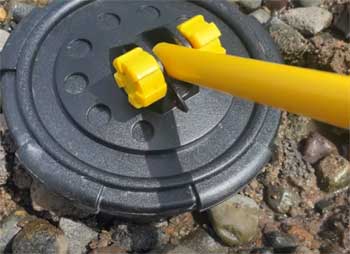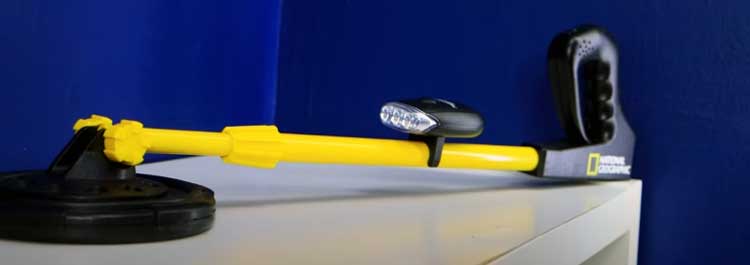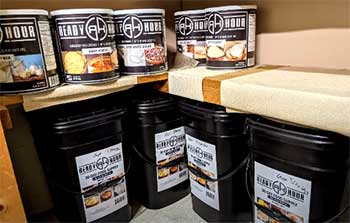If you’re looking for a fun and educational gift that will get your kids outdoors and away from screens, the National Geographic Metal Detector is a great choice.
This metal detector is designed specifically for children, making it an ideal first-time detector that is easy to use and lightweight.
Whether you’re looking to spark an interest in history, science, or simply want to encourage your child to explore the outdoors, this metal detector is worth considering.
My Experience With National Geographic Metal Detector

When I first got the National Geographic Metal Detector, I was excited to introduce my 7-year-old nephew to the world of treasure hunting.
The first thing that caught my eye was how lightweight and portable it is.
At just 1.4 pounds, it was easy for him to carry and maneuver, which is essential for kids.
The adjustable arm length and padded arm strap made it comfortable for him to use, even during extended treasure hunts.
The setup was straightforward, and the learning guide provided with the detector was a pleasant surprise.
It wasn’t just a manual but a full-color learning guide that explained the history of metal detectors, how they work, and some fun facts about treasure hunting. This added an educational element that made the experience even more enriching.
- Performance And Usability
The 7.5-inch waterproof coil is one of the standout features of this metal detector. We used it in various environments—parks, beaches, and even our backyard. The adjustable sensitivity helped avoid false positives, which is a common issue with metal detectors.
However, we did encounter some quirks. If the sensitivity was turned up too high, the detector would beep constantly, even when pointed at the sky. This was a bit frustrating initially, but after some adjustments, we found a sweet spot where it worked perfectly.
On our first outing, my nephew managed to find a few coins buried about 4 inches deep in the sand. The excitement on his face was priceless! The metal detector beeps and flashes an LED light when it detects metal, making it easy for kids to know when they’ve found something.
However, the detecting depth is limited to about 6 inches, which is sufficient for small objects but might miss deeper treasures.
Pros And Cons of National Geographic Metal Detector
Pros:

- Lightweight and Portable: The National Geographic Metal Detector’s lightweight design (just 1.4 pounds) makes it easy for kids to carry and handle during long treasure hunts. This feature is particularly important for young children who might struggle with heavier equipment, ensuring they can enjoy the experience without getting tired quickly. The adjustable arm length and padded arm strap further enhance comfort, making it suitable for a wide range of ages and sizes.
- Educational Component: The included full-color learning guide is a standout feature that elevates this metal detector from just a toy to an educational tool. It provides children with a basic understanding of how metal detectors work, the history behind them, and interesting facts about treasure hunting. This added value not only keeps kids engaged but also encourages a deeper interest in science and history.
- Waterproof Coil: The 7.5-inch waterproof coil adds versatility, allowing kids to explore various environments, including sandy beaches, muddy trails, or even shallow water. This feature expands the range of possible treasure hunting locations, making every outing a new adventure. It’s also reassuring for parents, as the detector is less likely to be damaged by water or moisture.
- Easy to Use: The simplicity of the National Geographic Metal Detector is one of its biggest selling points. Kids can easily get the hang of it with minimal instruction, thanks to the intuitive controls and straightforward setup process. The detector beeps and flashes an LED light when metal is detected, providing immediate feedback that is both clear and exciting for young users.
Cons:
- Sensitivity Issues: The detector can be overly sensitive if not adjusted correctly, leading to constant beeping.
- Limited Depth: With a maximum detecting depth of 6 inches, it may not detect deeper objects.
- Durability Concerns: Some users have reported issues with the detector’s sensitivity and durability, though customer service is responsive and helpful.
Also Read: Is Garrett ACE Apex Worth It?
Comparison With Other Brands
When comparing the National Geographic Metal Detector to other kid-friendly metal detectors, a few key differences stand out.
For instance, the Bounty Hunter Junior Target ID Metal Detector offers a bit more in terms of depth detection and has a target identification feature, which can differentiate between different types of metals. However, it is slightly heavier and may not be as user-friendly for younger children.
The Teknetics Digitek Youth Metal Detector is another competitor that offers a bit more advanced features, such as a digital display and discrimination controls. However, it comes at a higher price point and might be more suitable for older children or teens.
In terms of value for money, the National Geographic Metal Detector holds its own. It strikes a good balance between affordability, ease of use, and educational value. While it may not have all the bells and whistles of some more advanced models, it’s perfect for beginners and young children.
Maintenance Tips For National Geographic Metal Detector

Maintaining the National Geographic Metal Detector is simple, but following a few tips can ensure it remains in good working condition:
- Clean the Coil Regularly: After each use, especially in sandy or muddy environments, clean the coil with a damp cloth. Avoid using harsh chemicals, as they can damage the waterproof coating.
- Store Properly: When not in use, store the metal detector in a dry place. If possible, remove the batteries to prevent any potential leakage that could damage the internal components.
- Check Connections: Periodically check the connections between the coil and the control unit to ensure they are secure and free from dirt or debris.
- Adjust Sensitivity Carefully: To avoid issues with constant beeping, always start with the sensitivity set to a lower level and gradually increase it based on your environment. This will help you avoid false positives and make the treasure hunting experience more enjoyable.
- Protect from Extreme Temperatures: Avoid leaving the metal detector in very hot or cold environments for extended periods, as extreme temperatures can affect its performance and battery life.
Where To Buy?
If you’re ready to purchase the National Geographic Metal Detector, I recommend checking it out on Amazon. They often have the best prices, and you’ll benefit from their reliable shipping and return policies.
Additionally, the product is available on the official National Geographic Store, where you can sometimes find exclusive deals or bundles.
Also Read: Is Gordon Metal Detector Worth It?
Frequently Asked Questions (FAQ)
The best-reviewed metal detectors vary depending on the user’s needs. For children, the National Geographic Metal Detector is highly rated for its ease of use and educational value. For more advanced users, models like the Garrett ACE 300 and Minelab Equinox 600 are often recommended for their performance and features.
The National Geographic Metal Detector is designed for children, typically suitable for ages 6 and up. Its lightweight design, adjustable arm length, and simple controls make it ideal for young users.
The National Geographic Metal Detector uses a 7.5-inch waterproof dual coil that emits a magnetic field. When the coil passes over a metal object, it disrupts this field, causing the detector to beep and flash an LED light, indicating a find. The sensitivity can be adjusted to help avoid false positives.
Ground balance is a feature found in more advanced metal detectors, allowing them to filter out mineral content in the soil that can cause false signals. The Minelab Equinox 600 and Garrett AT Pro are two highly regarded models with excellent ground balance capabilities.
Wrapping Up
The National Geographic Metal Detector is an excellent choice for introducing children to the exciting world of treasure hunting. It’s lightweight, easy to use, and comes with an educational guide that adds a learning component to the fun.
While it has some quirks, such as sensitivity issues and limited depth detection, these are minor compared to the joy and engagement it brings to young explorers.
If you’re looking for a metal detector that will get your kids outdoors, teach them about history and science, and provide hours of fun, this is a great option.
You can purchase it on Amazon or directly from the National Geographic Store, where you’ll find reliable customer service and the possibility of exclusive offers.

